
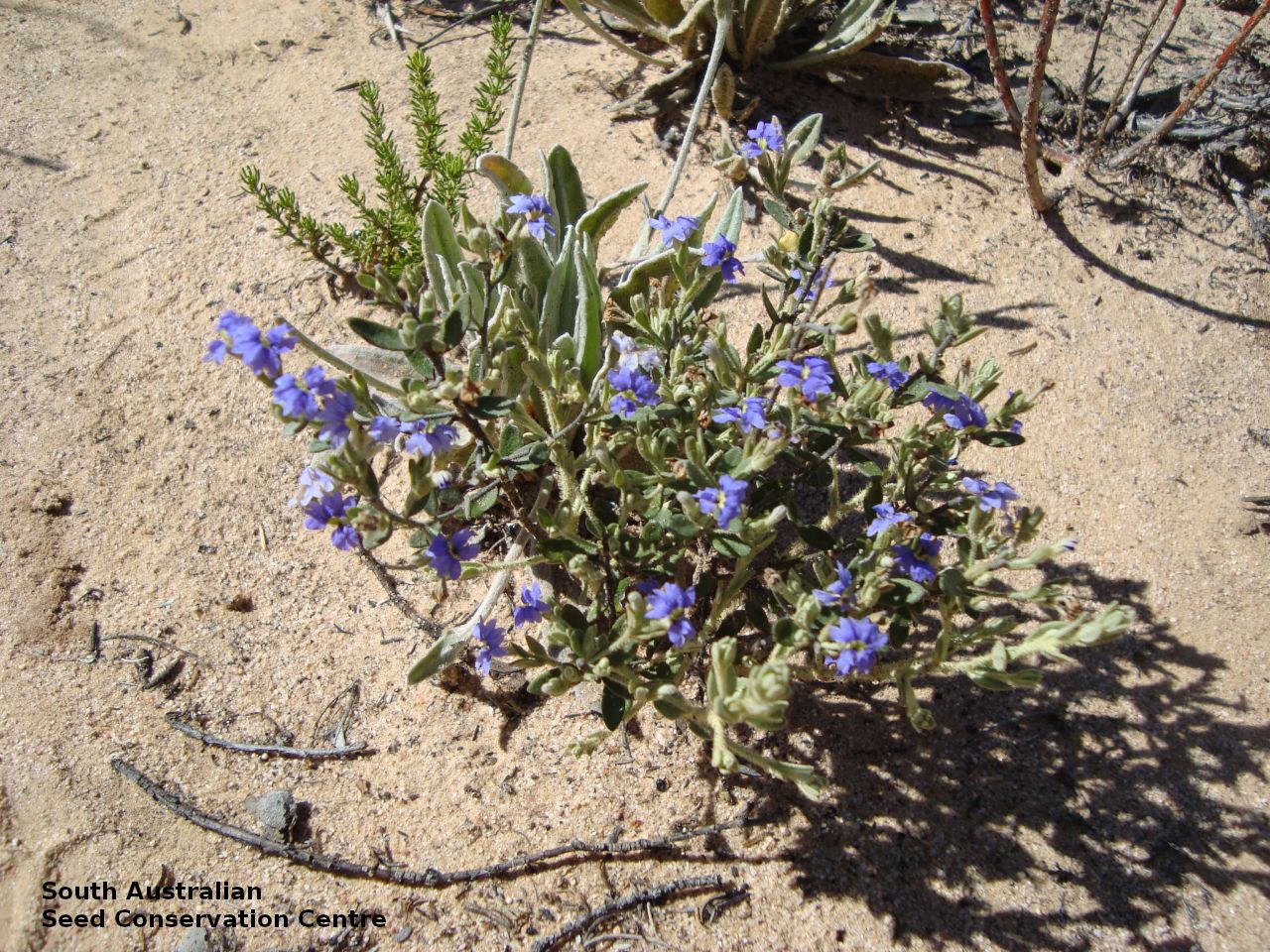
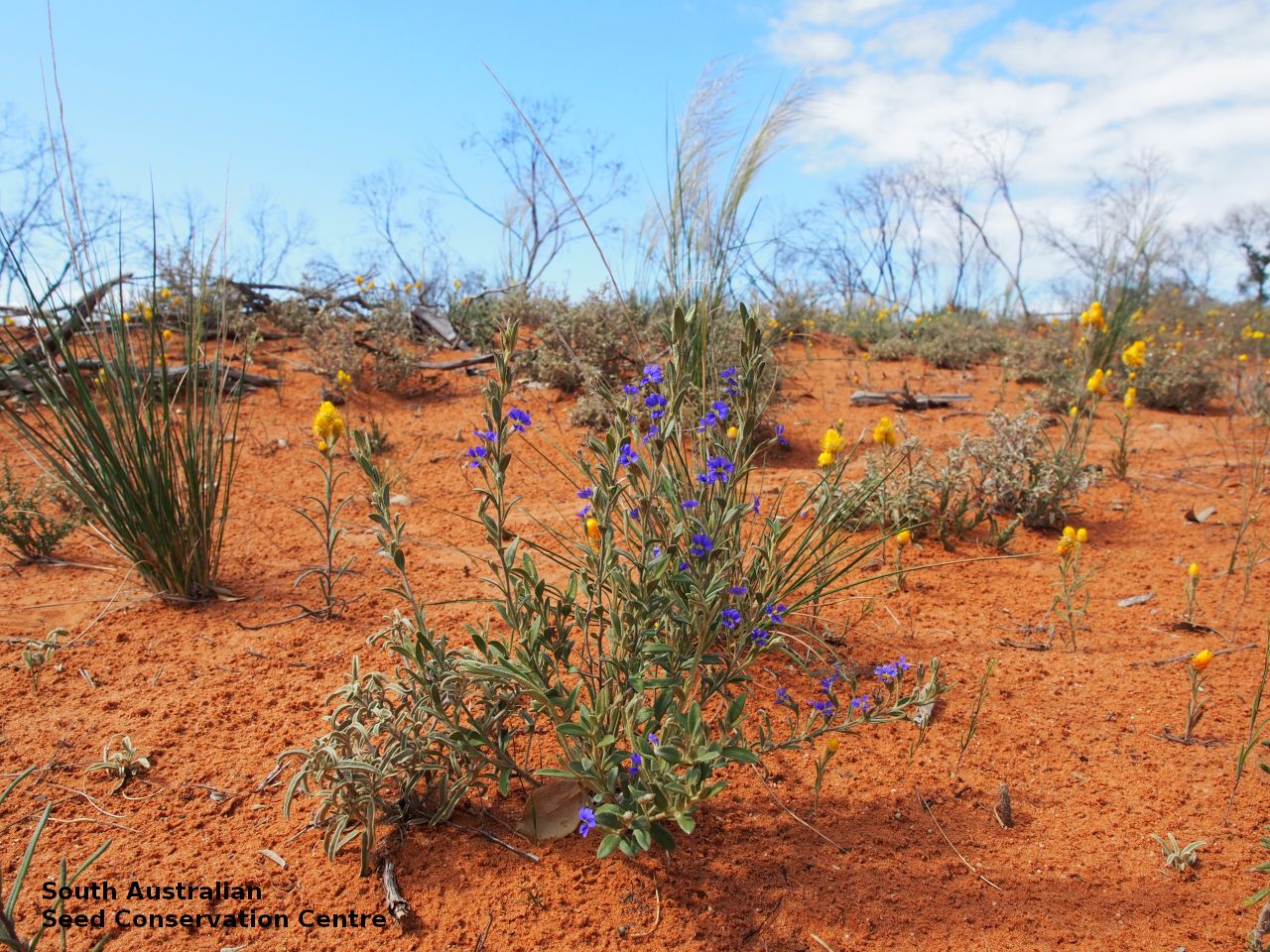
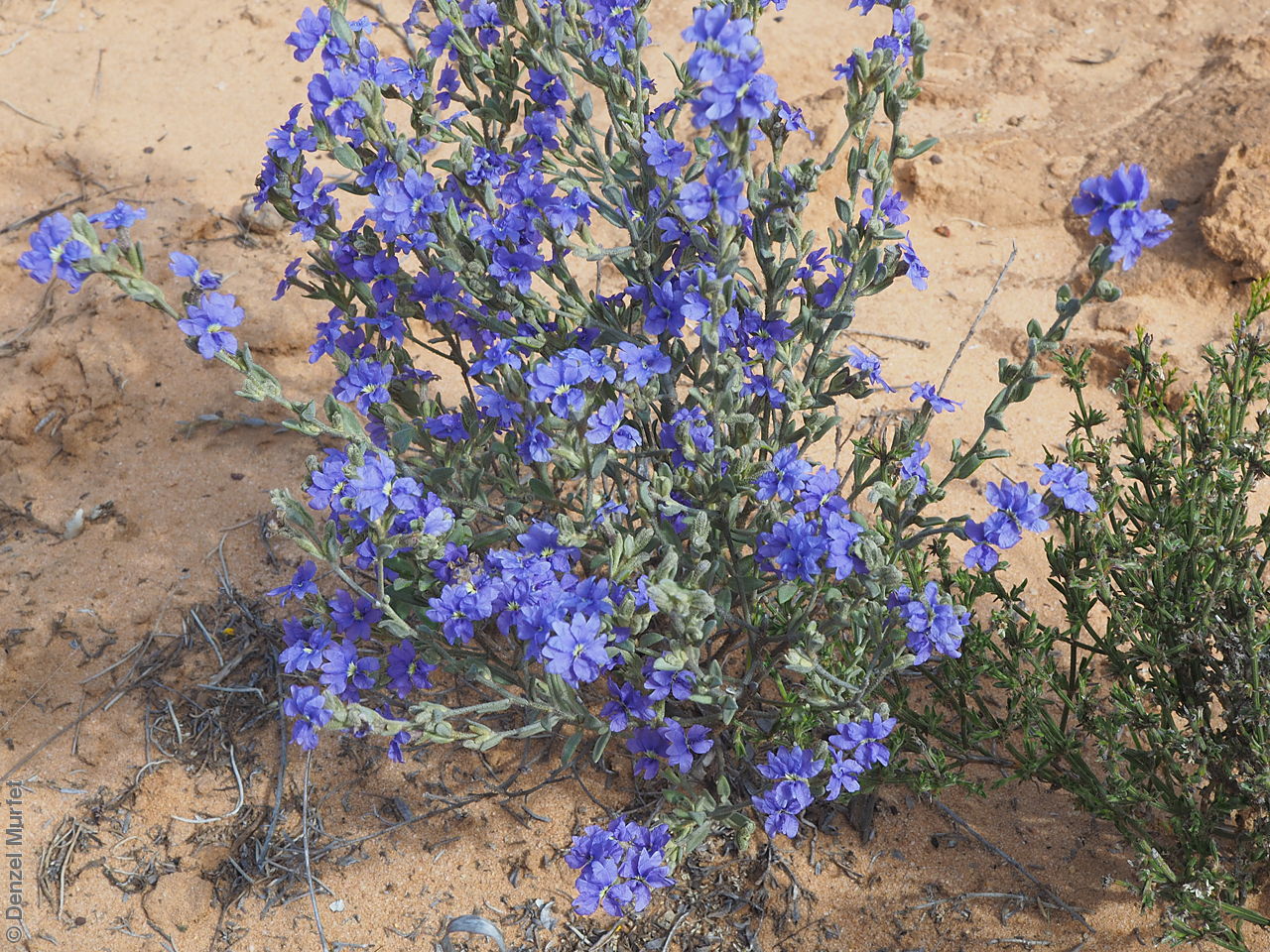
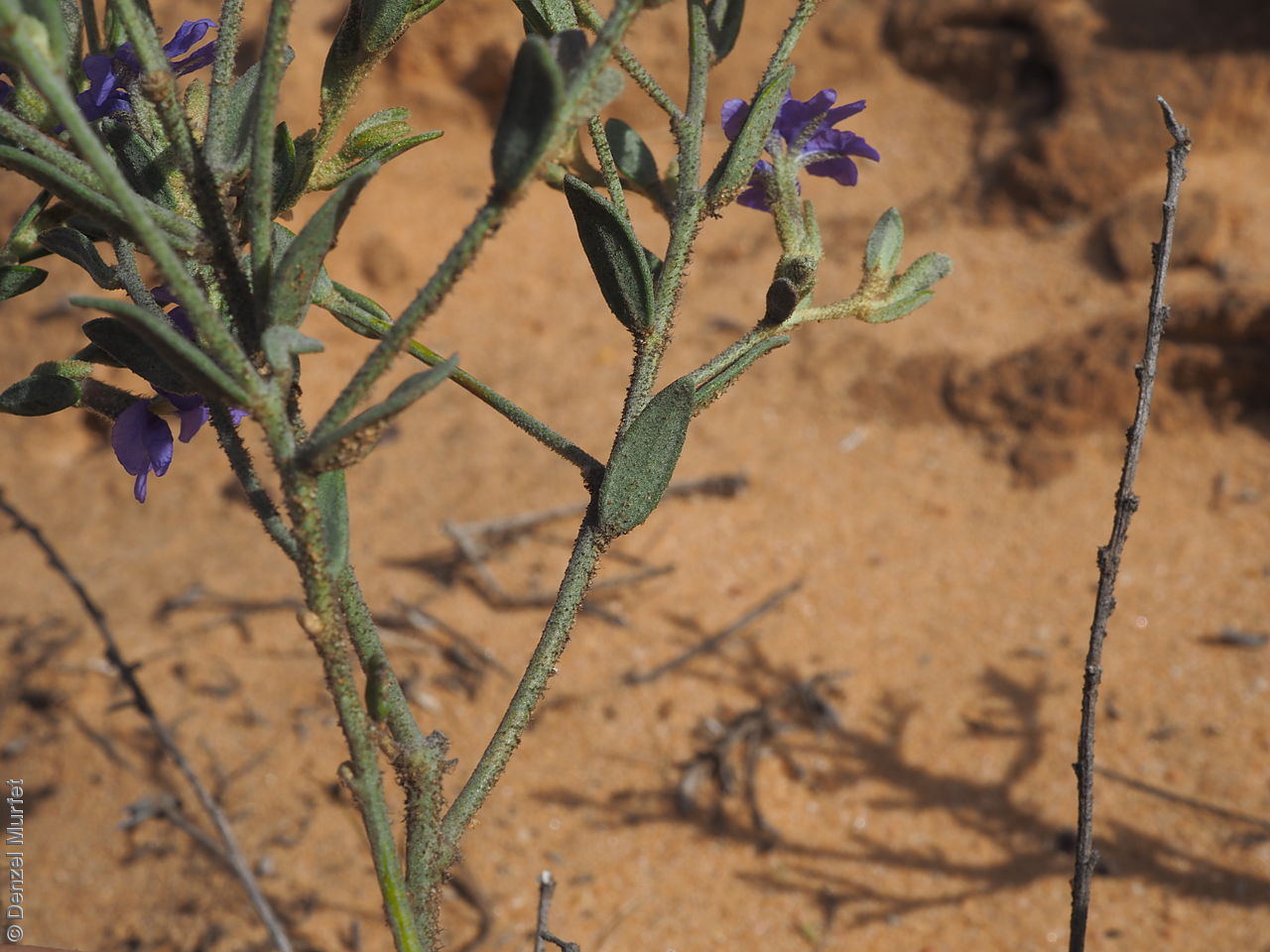
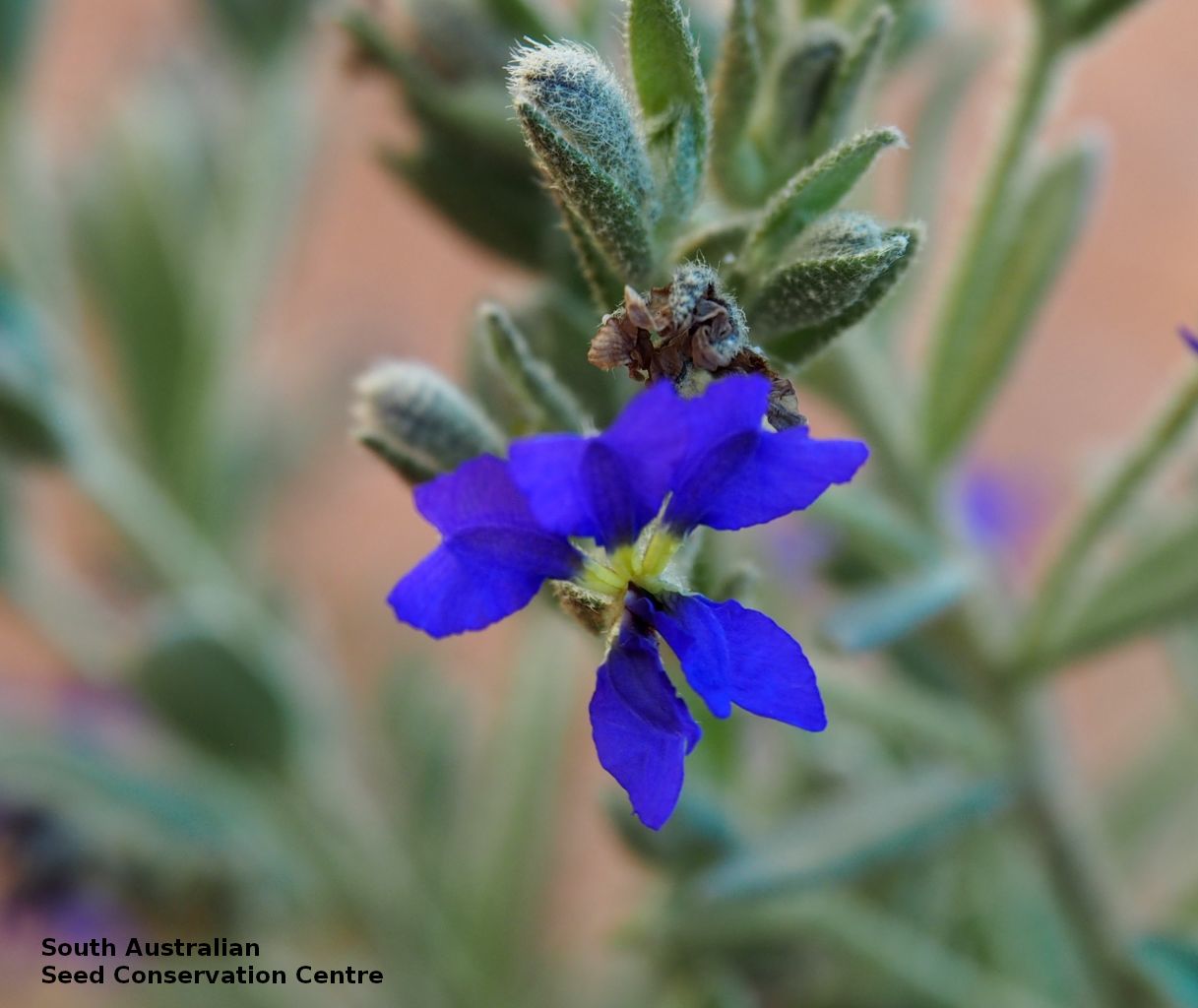
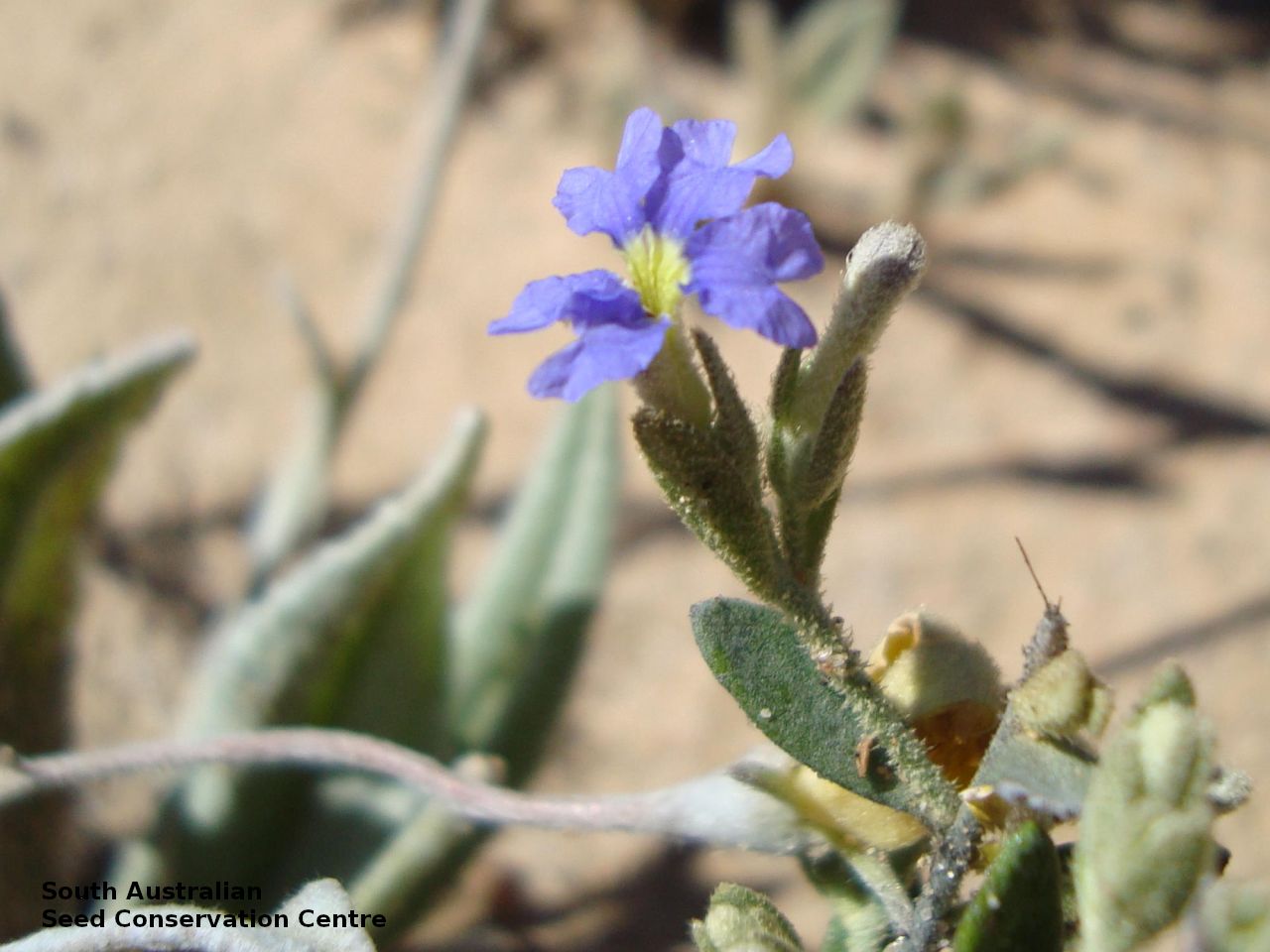
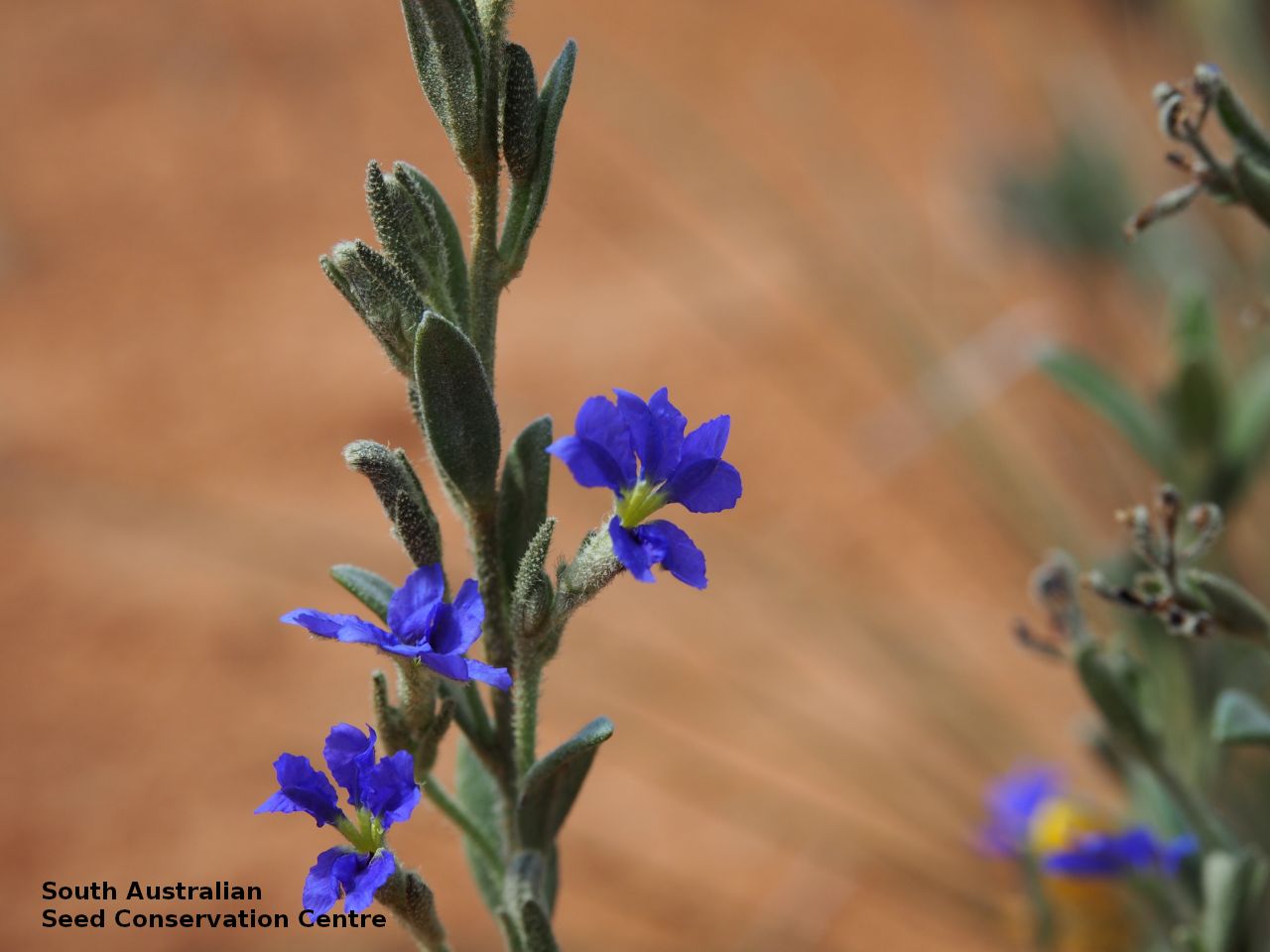
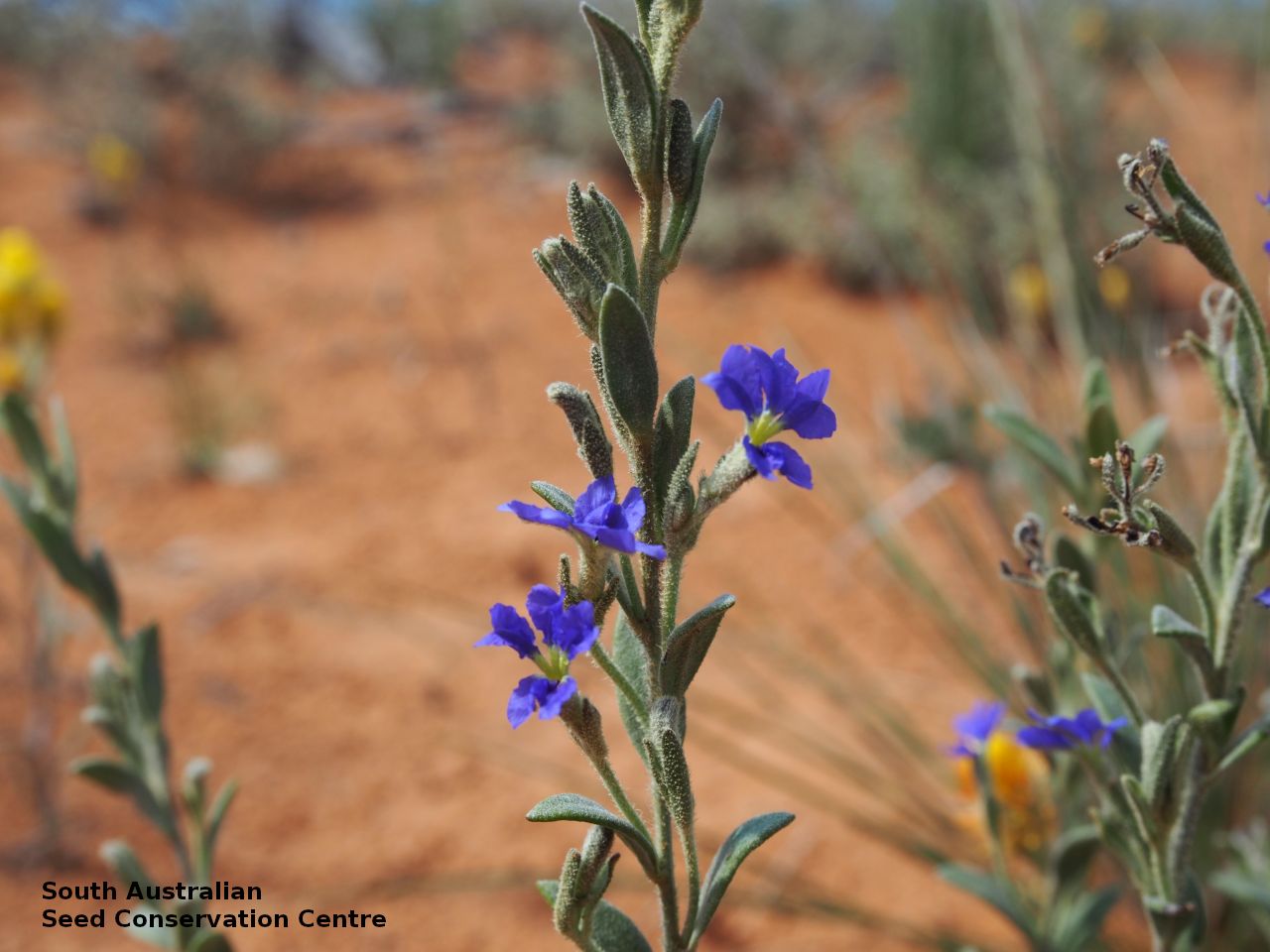
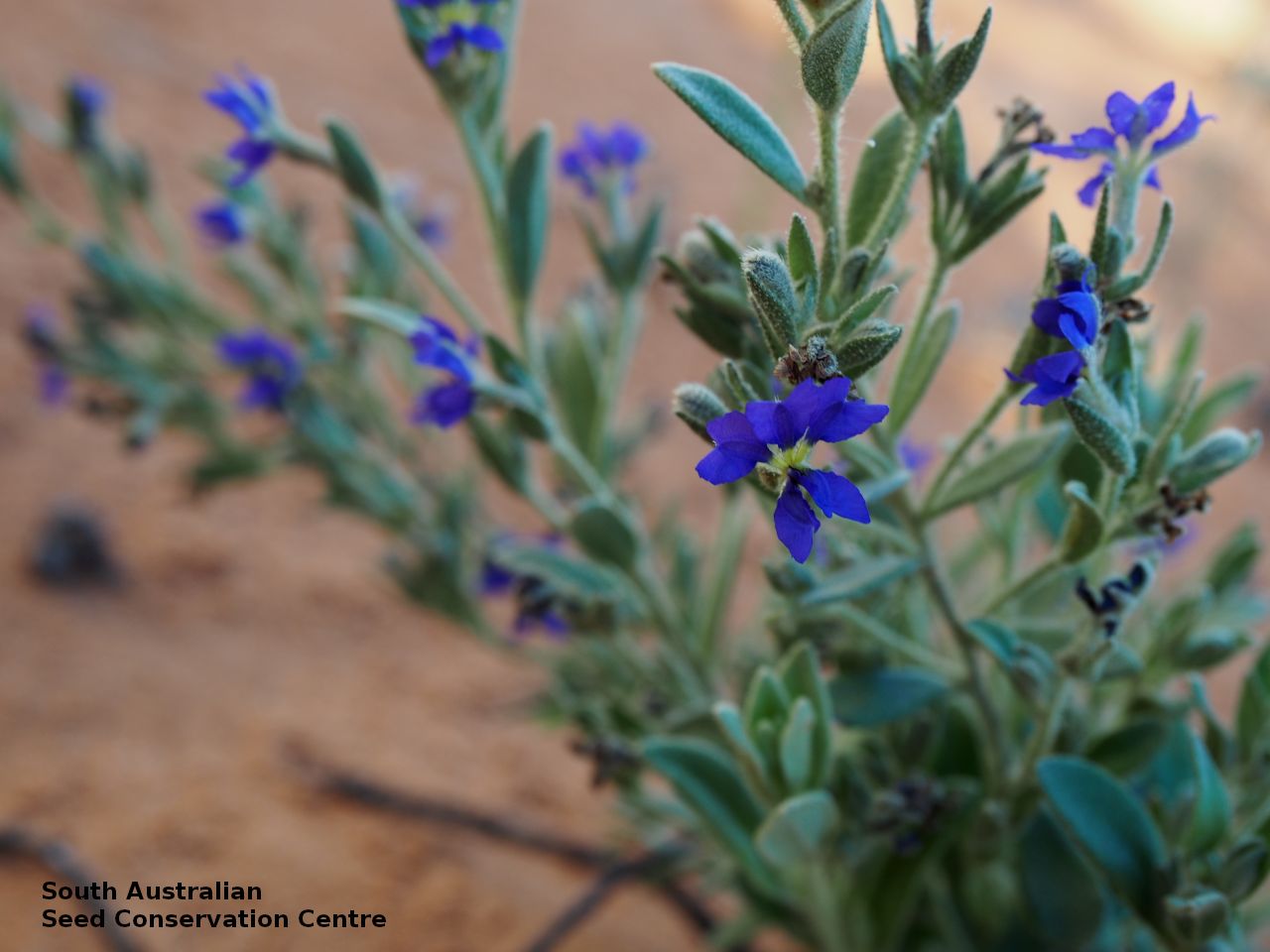
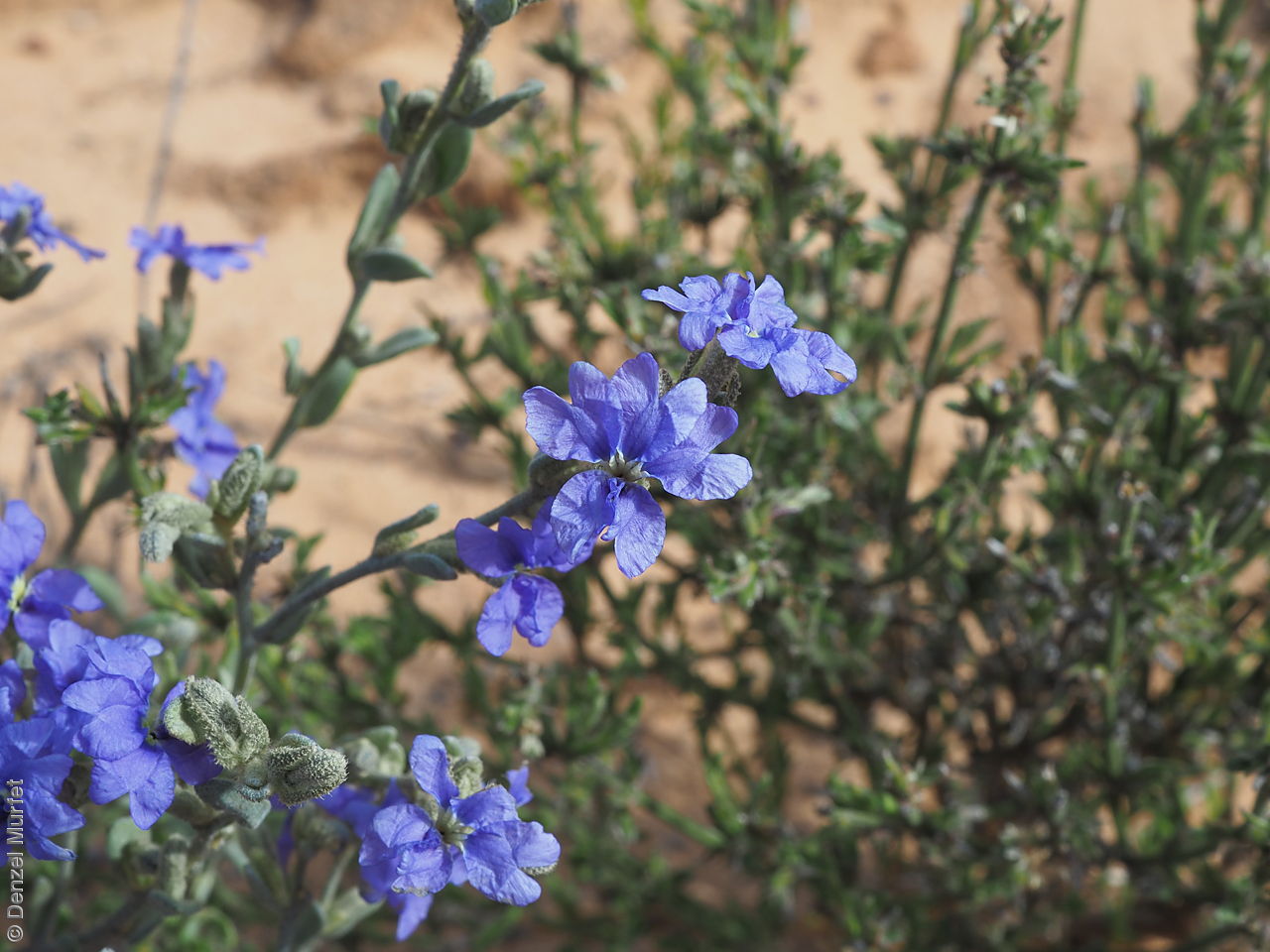


Botanical art
Etymology
Dampiera named after William Dampier (1652-1715), an English buccaneer and explorer, who collected botanical specimens on the north-west coast of Australia in 1699 as commander of H.M.S. Roebuck. Marifolia means having leaves similar to those of Teucrium marum.
Distribution and status
Found in the Murray region and the upper South-east in South Australia, growing in mallee scrub and forest on sandy soils. Also found in Victoria. Native. Common in South Australia. Common in Victoria.
Herbarium regions: Murray, Southern Lofty, South Eastern
NRM regions: Adelaide and Mount Lofty Ranges, South Australian Murray-Darling Basin, South East
AVH map: SA distribution map (external link)
Plant description
Spreading perennial subshrub to 60 cm high, with terete, slightly ribbed stems and hairy branches. Leaves ovate to elliptic-oblong, acute; to 20 mm long and 6 mm wide, hairy on both surfaces; margins entire and thickened. Inflorescence usually solitary in leaf axils, each bearing 1-3 blue flowers. Flowering between September and December. Fruits are hard rusty-hairy ovoid fruit to c. 4 mm long. Seed embryo type is spatulate.
Seed collection and propagation
Collect seeds between November and March. Collect maturing fruits, those that are fat and contain hard seeds inside. Collecting good mature fruits will be time consuming as few fruits maybe produced. Place the fruit in a tray and leave to dry for two weeks. Then rub the fruits gently with a rubber bung to dislodge the seeds. Use a sieve to separate any unwanted material. Store the seeds with a desiccant such as dried silica beads or dry rice, in an air tight container in a cool and dry place This species tends to produce very few viable seeds.